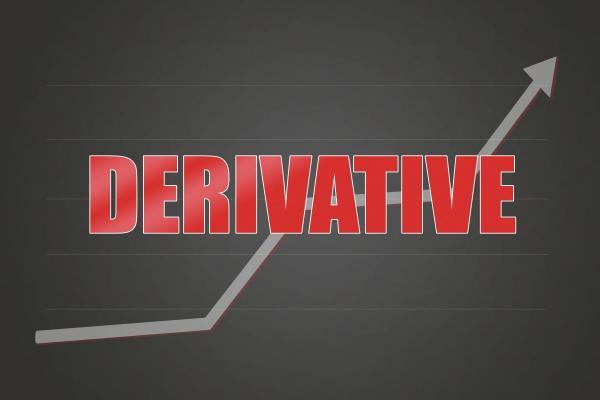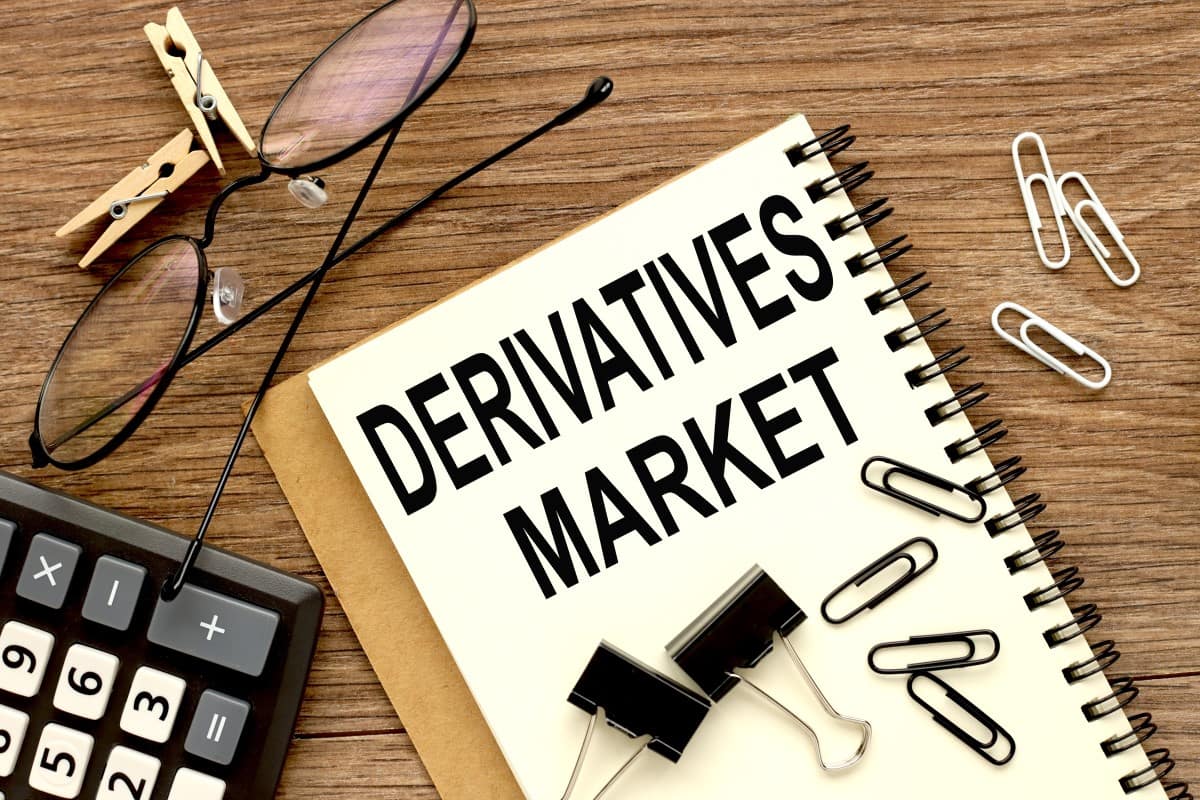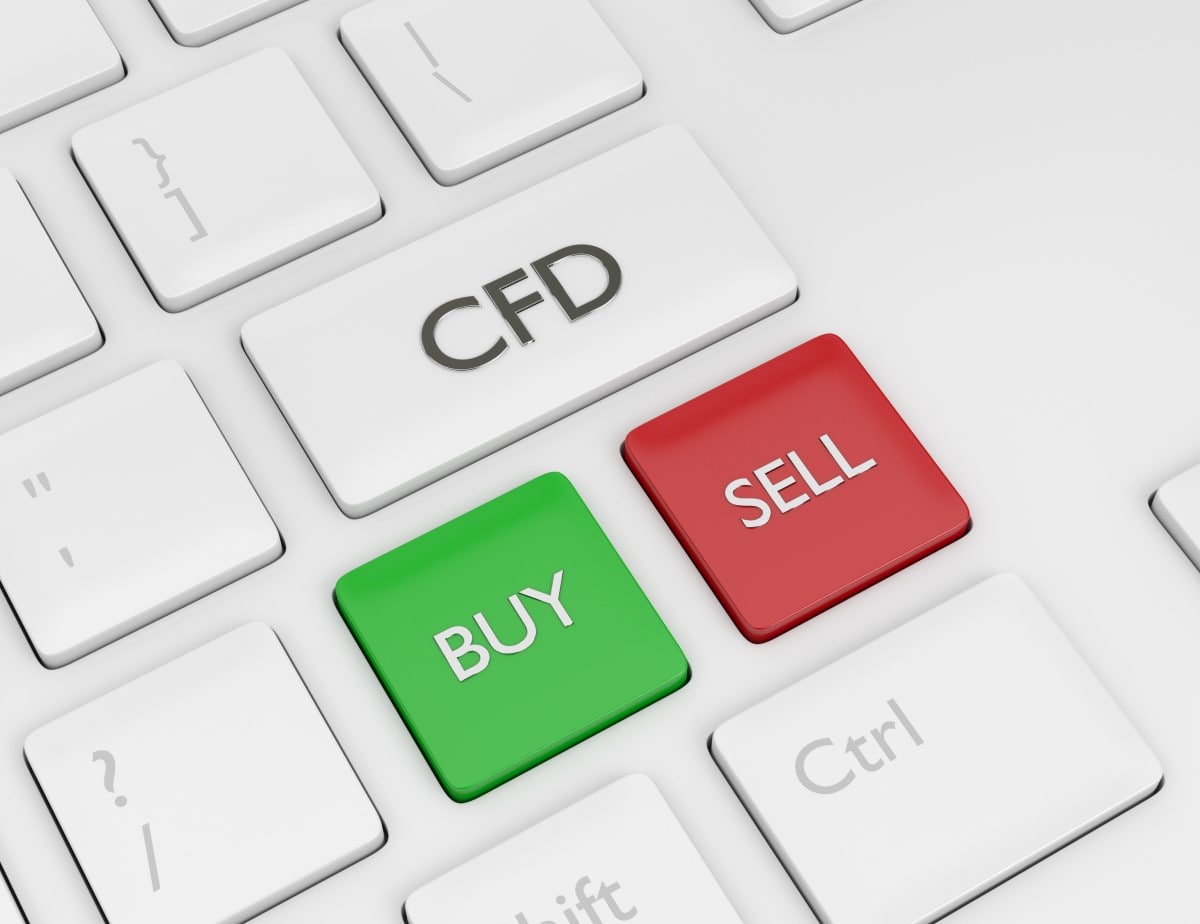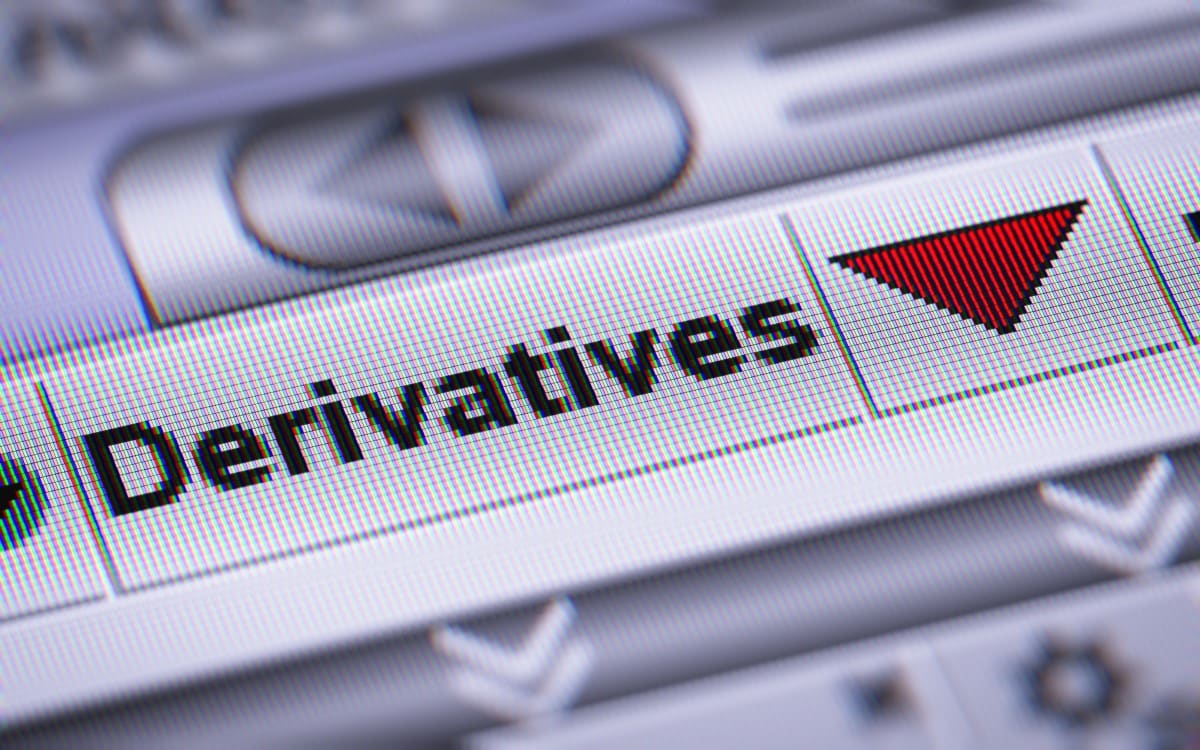

What are derivatives in finance?
Derivative contracts have existed since time immemorial, where they were used to maintain equilibrium in the exchange of goods or services on a global scale. Today, the market for derivative contracts is growing because they make trading and user transactions more accessible. With derivatives, traders don't need to worry about the complexity of various currencies and differences in national accounting systems that previously prevented transactions between users.
So, what is a financial derivative?
Financial derivatives, as mentioned above, are contracts that base their value on an underlying asset. With a derivative, the seller of the contract doesn't necessarily have to own the asset but can give the necessary money to the buyer for it to acquire it or give the buyer another derivative contract.
These financial derivatives are used to hedge investments and speculate. So, if a trader wants to speculate on a derivative, they can make profit if the price of their purchase is lower than the price of the underlying asset. For example: if you want to buy a futures contract (which we'll talk about later) for any asset that has a price of $1,000, and its price at the end of the contract increases to $1,100, you'll earn $100. In addition, you could also benefit from the fall in the sale price of the asset you've selected.
They can also be used as a hedge, i.e., to minimise the risks of a short-term trade where you could be affected by fluctuations in the price of the asset.
While there are many types of financial derivatives, the three most used are options, futures and swaps.
History

Derivatives aren't a new phenomenon in financial markets. According to some sources (mostly rumours), they appeared in the 25th-21st centuries B.C. Merchants from Babylon needed to equip their caravans, so they started to make agreements with creditors that allowed them to get loans. Repayment was influenced by how successful the delivery was. As a result, risks were distributed between parties. At the same time, the interest was much higher than the ordinary loan to cover losses in case the cargo was lost.
The next example of modern derivatives was found in 12th-century Europe. The economic upturn caused trade to develop, resulting in trade law being created at roughly the same time. A document called a lettre de faire served as a forward contract for the delivery of goods at a certain time.
At the beginning of the 17th century, options for tulip bulbs were traded in Amsterdam. By the 1630s, the first forward contracts appeared on the Royal Exchange in England.
Later on, derivatives were used in Japan. The history dates back to the 1650s when Japanese landlords received rent in the form of the rice harvest. However, their rent depended on weather conditions. Landlords started to use warehouses to keep rice and used rice coupons. Owners of coupons acquired specific amounts of rice at a certain date at a predetermined cost in the future. In turn, landlords received a stable income as rent payment.
In the 1930s, the modern put and call options became a commonplace feature on the London Stock Exchange.
By the 1960s, options trading for commodities and stocks became standard practice on American stock exchanges. The first forward contract was made at the Chicago Board of Trade on 13 March 1851, and in 1865, grain trading was formalised by the introduction of futures contracts. These contracts were standardised by determining the specific quality and quantity of goods and the time and place of delivery.
In 1972, the International Currency Market department was created at the Chicago Mercantile Exchange. It became the first specialised exchange platform for trading currency futures contracts. Before, only commodities were used for futures trading.
Later, in 1973, the Chicago Board Options Exchange was established. By the late 1970s, derivatives trading became common practice on all of the world's stock exchanges.
Trading Derivatives

The derivatives market is very large. It's believed that the market is valued at around $1.2 trillion due to the large number of derivatives available for assets such as currencies, stocks, bonds and commodities. Even in 2016, a figure was announced that pointed to the 25 billion contracts of derivatives traded, with Asia leading the way with 36% of the volume, North America with 34% and Europe with 20%.
Today, the derivatives market as a whole is divided into two smaller markets.
OTC: Over The Counter
Also known as non-exchange derivatives, these are contracts that are made directly and privately, i.e., they're not listed on any stock exchange. They're usually used by investment banks.
Exchange-Traded
These are quoted on stock exchanges and are used mostly by small investors. They're public, and the terms of the contract are predetermined.
Types of Financial Derivatives
Financial derivatives have marked important milestones throughout the global economy. Among the most popular are:
- Collateralised Debt Obligations (CDOs)
- Swaps and Credit Default Swaps (CDSs)
- Forwards
CDOs are financial instruments that are considered the main cause of the economic crisis that occurred in 2008 and which based their value on the repayment of the loans offered.
Swaps offer investors the possibility of exchanging assets or debts for another of similar value, managing to reduce the risks for the parties involved. The swaps resulted in the creation of CDSs, which were sold as insurance against the default of municipal bonds and which also contributed to the 2008 financial crisis.
Forwards are another type of OTC financial derivative and are used to buy or sell an asset at a previously agreed-upon value on a specific date in the future.
In addition, there are financial derivatives that are used to conduct decentralised trading in the network, that is, without an intermediary. The three most popular are the following.
CFDs

CFDs, or Contracts for Difference, allow you to buy or sell a certain number of units of a particular asset, depending on the decrease or rise in its value and thanks to its leverage. The gains (or losses) depend on the fluctuation of the asset's price. With CFDs, you can open long positions if you think the price will increase or short positions if you think it will decrease.
For example, suppose that the price of a stock is $100, and you decide to buy a thousand shares of it for a total of $100,000. If the price increases to $105, you'll earn $5000 since each share you bought will earn you an additional $5. That means your total profit will be $105,000.
Futures
Futures are used to exchange an underlying asset at a future date and at a predetermined price, which protects buyers from drastic changes in asset prices. These are used mostly to trade commodities.
For example, a cookie maker could buy sugar futures at a set price. In this way, if the price of sugar increases considerably, the manufacturer can afford to buy the necessary quantity a few months later.
Options
Options are contracts that are made between two parties and allow the owner to buy (call) or sell (put) assets at a specific price and at a specific date or before. They're most frequently used in stock trading.
With options, the buyer has the right to buy or sell the underlying asset, while the seller is obliged to buy or sell it at the agreed price if the buyer exercises their right.
For example: suppose that the shares of a telephone company are valued at $95 today. But next month, the company is launching a new device that will most likely increase the value of the shares. So, you acquire call options at $100 for three months, which are worth $5 for each one on the market. As a buyer, you can exercise your right to call in three months, so the seller must sell the shares at $100.
Advantages and Disadvantages of Derivative Trading

Operating with derivatives can mean big profits or big risks. That's why you should first acquire the necessary knowledge to trade them responsibly.
Among derivatives' main benefits are that they protect investors against losses while, at the same time, helping them profit through an asset's gains.
Unlike direct investments in stocks, derivatives allow you to make a profit quickly. In addition, you can create your own strategies so that you can use them to your advantage.
However, because the market is open, the values are constantly fluctuating, which entails numerous risks. One of them is that you can lose the entire value of your investment in a matter of minutes if its price falls considerably.
On the other hand, most contracts have a predetermined duration, so if your investment doesn't profit within the agreed time, your losses could be 100%.
Finally, the limited knowledge we have about derivatives is a big risk. Because a derivative's value depends on the value of its underlying asset, assigning an exact price becomes complicated. That makes them appealing to fraudsters who take advantage of the situation and operate against professional investors and beginners.
CFDs vs Futures and Options
CFDs, futures and options allow you to trade based on the variations in an asset's price. That is to say, when operating with derivatives, you don't buy or sell the asset itself. In addition, both kinds of derivatives allow you to trade with leverage, so you can make transactions with more money than you currently have. However, CFDs add flexibility by allowing leverage to be made with smaller amounts and with totally different assets.
To decide which kind of derivative to use, you must first know what you're looking for since each derivative has particular characteristics. For example, futures and options are ideal for opening long-term positions because their daily commissions are cheaper, and their opening rates are higher than those of CFDs.
On the other hand, CFDs are better suited to small and short positions. In addition to that, CFDs have greater liquidity and don't feature an expiry date, meaning you can close the position at any time. With futures and options, there may not be enough liquidity, and the cost to undo the position is very high.
Is It Worth Trading Futures or Options?
Previously, we talked about the differences between CFDs and futures and options. However, you should also take into account certain particularities between futures and options so that you can choose the one that best suits you.
When it comes to futures contracts, the buyer must pay the agreed-upon amount initially at the time the expiry date arrives, while, with options, the buyer can cancel the contract.
Therefore, operations with future contracts are much stricter and provide greater security. Options, on the other hand, are less rigid and will allow you to leave the operation if the circumstances warrant it.
Why Invest in Derivatives?

While it's true that these are volatile investments, derivatives can be an excellent option to get the most out of your portfolio.
Using financial derivatives, it's possible to speculate and take advantage of the variations presented by the prices of the underlying assets, but it's also possible to manage and reduce the risks that an investment brings with it.
When engaging in speculation, you can make a profit if the asset's purchase price is lower than the asset's price at the end of the futures contract.
On the other hand, when we talk about the use of derivatives to manage risks, the owner of an asset can protect his/her portfolio against a decrease in the value of the asset. If the asset's price increases, you can earn more money, but if the asset's price falls, you can earn or lose less money.
In turn, the increase in leverage is another excellent reason to use derivatives since you can trade with only $10 but open a position worth $100 or $1,000.
FAQ
What Is an Example of a Derivative?
A convertible bond can be considered to be a derivative. The value of a convertible bond will depend on the value of the underlying asset, which makes it a derivative security.
What Are Derivatives and the Different Types?
A derivative is a financial instrument whose value is based on one or more underlying assets, for example, bonds, commodities and currencies. There are four types of derivatives: futures, swaps, options and forwards.
Why Do Companies Use Derivatives?
Derivatives are a perfect way to hedge portfolios and reduce risks. Moreover, they're easy to use and have a low cost.
What Are Derivatives in Simple Words?
A derivative is a contract that allows or obliges parties to perform certain actions concerning an underlying asset. Derivatives can be structured on a range of different assets, including futures, CFDs, commodities, etc.
What Are Derivatives Used For?
Derivatives are used to hedge investments. Another purpose is to speculate on future moves in the underlying asset.
Disclaimer: The information in this article is not intended to be and does not constitute investment advice or any other form of advice or recommendation of any sort offered or endorsed by Libertex. Past performance does not guarantee future results.
Why trade with Libertex?
- Get access to a free demo account free of charge.
- Enjoy technical support from an operator 5 days a week, from 9 a.m. to 9 p.m. (Central European Standard Time).
- Use a multiplier of up to 1:30 (for retail clients).
- Operate on a platform for any device: Libertex and MetaTrader.